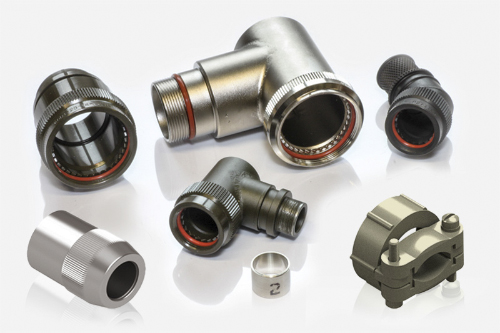

 If you build electronic or electrical systems, you will regularly need to interconnect subassemblies or possibly boards within subassemblies. Clearly, this calls for cables and connectors, each of which must be specified to meet the mechanical, electrical and environmental demands of their application reliably.
If you build electronic or electrical systems, you will regularly need to interconnect subassemblies or possibly boards within subassemblies. Clearly, this calls for cables and connectors, each of which must be specified to meet the mechanical, electrical and environmental demands of their application reliably.
However, when planning a cable assembly, it’s essential to give due consideration to the connector backshell and its role in protecting the connector, safeguarding the reliability of the cable and ultimately that of the entire system. By understanding this role we can select the right backshell for the application and ensure that the integrity of the total design is maintained.
The back shell protects in many ways. If it includes a grommeted cable entry it can prevent the ingress of dirt, moisture and liquids. This environmental seal can be maintained provided that all grommet entries are either populated with a wire or cable or are plugged. Maintaining the seal also depends on ensuring that the cables are never bent to an excessive angle, typically not more than 13? away from the connector axis. Using a backshell with strain relief or a cable clamp can protect from excessive cable flexing and bend, as well as removing loading from the connector pin solder or crimp joints. When specifying backshells, 45? 90? or straight through cable entries can be chosen.
Sometimes it’s necessary to locate extra components, such as a filter network, close to a connector. In such cases, extended backshells can be ordered to accommodate this extra space requirement. Both standard and extended backshells can support the connector’s ability to withstand other environmental challenges such as fungal growth, humidity, shock and vibration.
Most multicore systems cables carry low voltage data signals, and these can be susceptible to both electromagnetic (EMI) and radio frequency (RFI) interference. The cable cores can become aerials for such interference, transferring it into the system where it can cause data loss or damage. Equally, the cable cores can transmit EMI and disrupt other nearby equipment. Multicore cables can be designed to prevent these susceptibility and interference problems by enclosing the conducting cores within a braided metal sheath made of tightly woven metal strands. The sheath must be taken to ground potential at one or both ends of the cable; this can be achieved using a suitable backshell to provide the grounding and termination facility. The backshell body can also act as an EMI shield.
Some military applications call for electronic systems to be resistant to electromagnetic pulse (EMP) events as well as EMI/RFI. Solid materials such as rigid conduit or pipe provide the best protection, but a braided sheath can also be used, as for EMI/RFI shielding. Continuity is extremely important in EMP protection. This must include full mechanical bonding and electrical continuity between the braided sheath and the connector backshell.
The above is an introduction to the electrical, mechanical and environmental factors to be considered when specifying a backshell. Exact parameters depend on the type of connector – round, rectangular, D-type etc, its number and type of contact pins, and its application – commercial, industrial or military. The US Department of Defense has many applicable standards for connectors, and these usually include references specifically for backshells. For example, MIL-DTL-83513G states ’The shell shall be designed to positively retain the insulator and shall be constructed so that the insulator cannot be removed’, and for shell polarisation: ‘Polarization shall be accomplished by a keystone shape shell design with polarisation accomplished before engagement of the pins and sockets’. It also specifies acceptable materials for backshells, which include dying cast or extruded aluminium, and acceptable finishes, including electrodeposited aluminium or cadmium. Environmental specifications include a requirement that the shell must support the connector’s ability to withstand a 48-hour salt spray test.
Other standards related to connectors and backshells include MIL-C-85049 and D38999. Whichever connector assembly you’re working on, whether it’s for a high-specification rugged military application, or a cost-sensitive, high volume commercial requirement, the need for reliability is paramount. The consequences of failure could impact profitability, reputation or even pose a threat to user safety. Therefore Oracle Components has established a specialist website www.backshells.co.uk to help you source the backshells you need in the quantities you want. They can offer specialist advice on the availability of backshells suited to your project needs, backed up by access to a large number of suppliers who can source the volumes to meet your schedule.
We use cookies to improve your experience on our website. By browsing this website, you agree to our use of cookies. More information.
